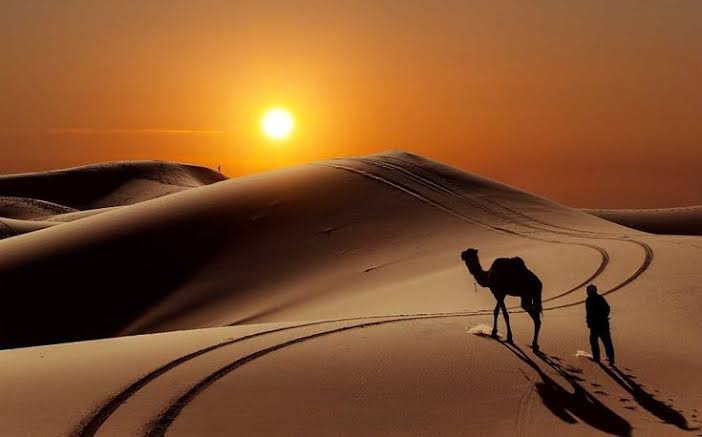The word “desert” conjures up images of lifeless landscapes characterized by unending lengths of sand dunes and intense heat. The truth is much more varied and breathtaking, yet that picture does fit some deserts. Extreme dryness, defined as regions receiving fewer than 250 millimeters (10 inches) of precipitation per annum, is another defining feature of deserts, alongside heat and sand. This description encompasses not just the scorching, sandy deserts of the Middle East and Africa, but also the frigid, windswept tundra of the Arctic and Antarctic. In 2025, deserts are more important than ever. Not only are they geographical wonders, but they are also subjects of environmental research, climate monitoring, and even space exploration analogs. This is because we are still seeing the effects of climate change and there is a growing interest in Earth’s extreme environments. These enormous, parched areas cover many continents, are home to species with special adaptations, and hold geological mysteries that date back millions of years. Every desert, from the frigid arctic plateaus to the scorching salt basins, is mysterious and beautiful in its own way. Here we take a look at the ten biggest deserts in the world, ranked by total area.
Various climatic and geological forces have sculpted the deserts that make up this region, which includes both polar and subtropical deserts as well as coastal deserts. Not only are these deserts enormous in size, but they also have a wide variety of habitats, landscapes, and functions in the world’s climate and biodiversity. One thing to keep in mind before getting into the list is that deserts make up around a third of the Earth’s surface. They support an astonishing variety of plant and animal life, including many species that have adapted to survive in the world’s most extreme environments. From spiritual practices and nomadic ways of life to old trade routes like the Silk Road, which formerly passed through the Gobi and Sahara, deserts are also significant cultural and historical landmarks.
These Are The Top 10 List Of The 10 Largest Desert In The World
1. Antarctic Desert – (13,829,430 km²)
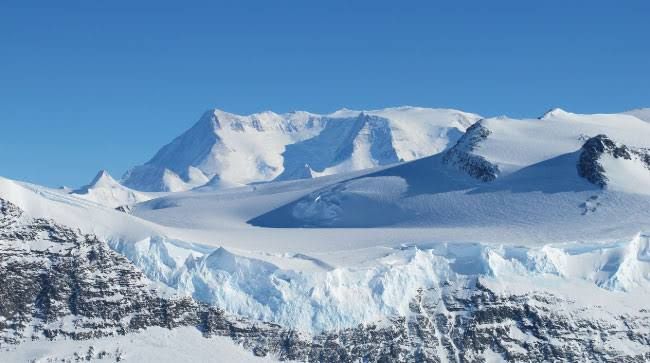 The entire Antarctic continent is encircled by the Antarctic Desert, the biggest desert on the planet. Extreme cold, with temperatures as low as -89.2°C, distinguishes this polar desert from the usual hot deserts. Its massive ice sheets, which span about 13.8 million square kilometers, receive less than 200 millimeters of precipitation annually, most of it snow. Studies of the world’s climate rely on the area’s research sites, which monitor ice core data and changes in the atmosphere. Despite its difficult environment caused by its isolation and harsh weather, it harbors unique microbes that have adapted to frigid temperatures.
The entire Antarctic continent is encircled by the Antarctic Desert, the biggest desert on the planet. Extreme cold, with temperatures as low as -89.2°C, distinguishes this polar desert from the usual hot deserts. Its massive ice sheets, which span about 13.8 million square kilometers, receive less than 200 millimeters of precipitation annually, most of it snow. Studies of the world’s climate rely on the area’s research sites, which monitor ice core data and changes in the atmosphere. Despite its difficult environment caused by its isolation and harsh weather, it harbors unique microbes that have adapted to frigid temperatures.
2. Arctic Desert (13,726,937 km²)
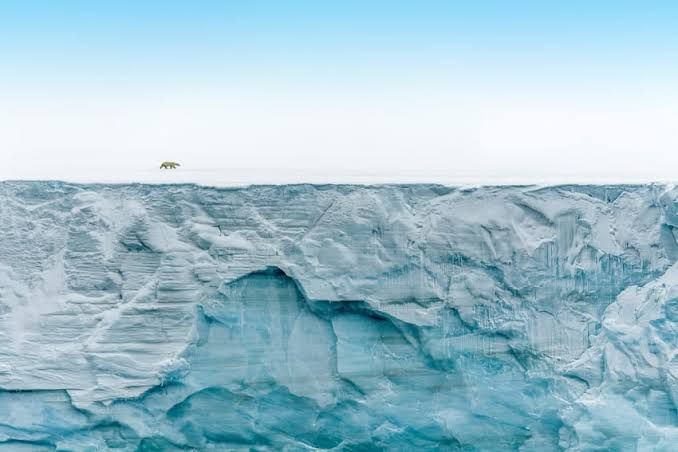
The Arctic Desert is the world’s second-largest desert, covering an area of over 13.7 million square kilometers. Parts of Russia, Greenland, and Canada are part of it. Tundra and ice fields inhabit this polar desert, which receives less than 250 mm of precipitation each annum. At temperatures as low as -40°C, the landscape can become desolate with permafrost and limited flora. The Arctic is home to migrating birds, polar bears, and Arctic foxes, but the melting ice cap is threatening ecosystems and local populations due to the fast climatic change.
3. Sahara Desert (9,200,000 km²)
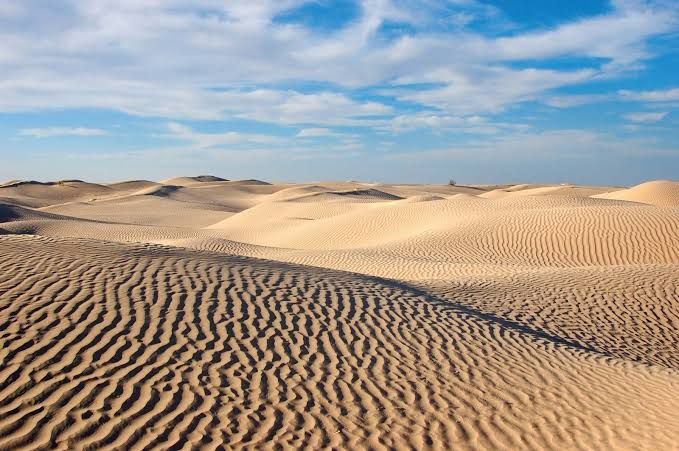
From the Atlantic Ocean to the Red Sea, the Sahara Desert constitutes the largest searing desert in the world, encompassing a total area of 9.2 million square kilometers across North Africa. Egypt, Algeria, and Morocco are just few of the countries that are located in this region, which receives less than 100 millimeters of precipitation annually. The characteristic sand dunes, rocky plateaus, and intermittent oasis of this region provide a habitat for nomadic tribes as well as animals such as the fennec fox. The Sahara Desert is continuing expanding in 2025 as a consequence of desertification, which has an impact on the water and agricultural supplies that are located in the surrounding area.
4. Australian Desert (2,700,000 km²)
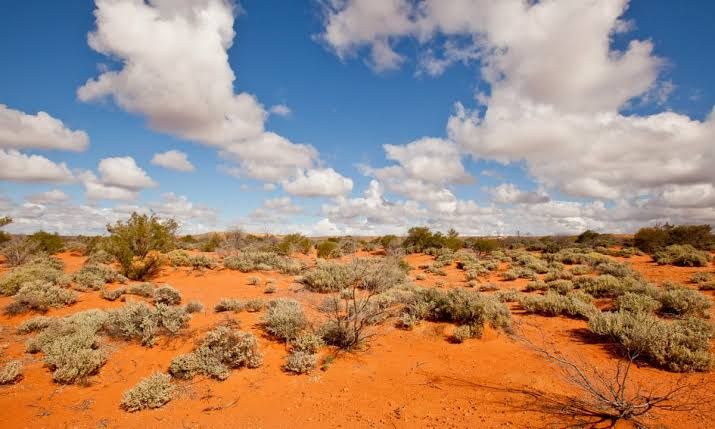 The term “Australian Desert” refers to a collection of deserts that encompass a total area of approximately 18% of the mainland of Australia, which is approximately 2.7 million square kilometers. These deserts include the Great Victoria Desert and the Simpson Desert. It receives between 81 and 250 millimeters of rain annually and is home to salt lakes, red sand dunes, and shrublands that are few and far between. In addition to being the habitat of endangered creatures such as kangaroos and bilbies, it holds a profound cultural significance for the communities of Aboriginal people. The preservation of its biodiversity in the face of mining and climate change is the primary focus of conservation projects going forward in the year 2025.
The term “Australian Desert” refers to a collection of deserts that encompass a total area of approximately 18% of the mainland of Australia, which is approximately 2.7 million square kilometers. These deserts include the Great Victoria Desert and the Simpson Desert. It receives between 81 and 250 millimeters of rain annually and is home to salt lakes, red sand dunes, and shrublands that are few and far between. In addition to being the habitat of endangered creatures such as kangaroos and bilbies, it holds a profound cultural significance for the communities of Aboriginal people. The preservation of its biodiversity in the face of mining and climate change is the primary focus of conservation projects going forward in the year 2025.
5. Arabian Desert (2,330,000 km²)
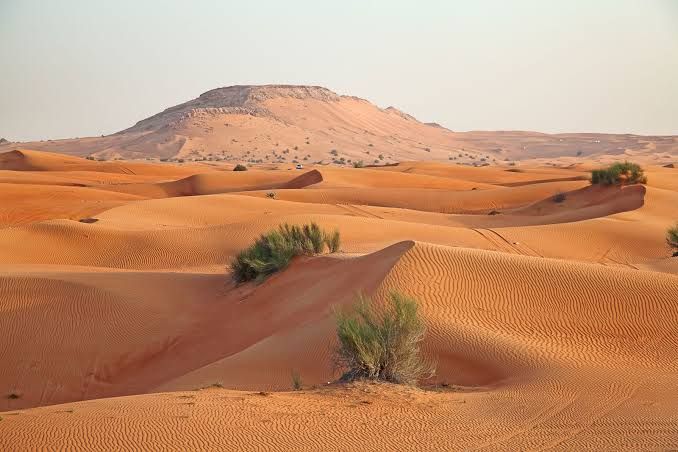 Over the course of the Arabian Peninsula, the Arabian Desert has a total area of 2.33 million square kilometers and includes portions of the countries of Saudi Arabia, Yemen, and Oman. It is characterized by high temperatures and receives fewer than one hundred millimeters of rainfall annually. It is famous for its enormous sand seas, such as the Rub’ al Khali. Bedouin tribes and other extraordinary animals, such as the Arabian oryx, make their homes in this harsh terrain. Oil exploration and urban expansion will continue to have an impact on the economic and environmental dynamics of the region in the year 2025.
Over the course of the Arabian Peninsula, the Arabian Desert has a total area of 2.33 million square kilometers and includes portions of the countries of Saudi Arabia, Yemen, and Oman. It is characterized by high temperatures and receives fewer than one hundred millimeters of rainfall annually. It is famous for its enormous sand seas, such as the Rub’ al Khali. Bedouin tribes and other extraordinary animals, such as the Arabian oryx, make their homes in this harsh terrain. Oil exploration and urban expansion will continue to have an impact on the economic and environmental dynamics of the region in the year 2025.
6. Gobi Desert (1,295,000 km²)
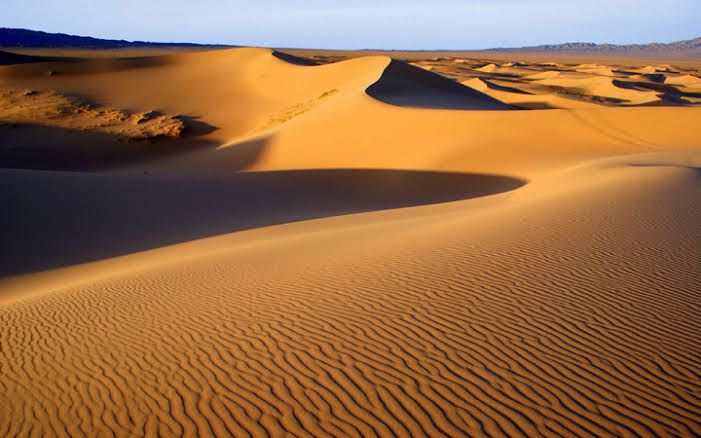 The Gobi Desert is a scorching desert that stretches across 1.3 million square kilometers in northern China and southern Mongolia. Temperatures in the Gobi Desert range from -40 degrees Celsius to 40 degrees Celsius. The stony terrain and sparse vegetation receive approximately 194 millimeters of precipitation on an annual basis. Not only is the Gobi home to nomadic herders, but it also has a wealth of fossils, including the remnants of dinosaurs. In the year 2025, human activity is expected to increase as a result of infrastructure programs such as China’s Belt and Road Initiative. This raises concerns on the impact that these initiatives will have on the environment.
The Gobi Desert is a scorching desert that stretches across 1.3 million square kilometers in northern China and southern Mongolia. Temperatures in the Gobi Desert range from -40 degrees Celsius to 40 degrees Celsius. The stony terrain and sparse vegetation receive approximately 194 millimeters of precipitation on an annual basis. Not only is the Gobi home to nomadic herders, but it also has a wealth of fossils, including the remnants of dinosaurs. In the year 2025, human activity is expected to increase as a result of infrastructure programs such as China’s Belt and Road Initiative. This raises concerns on the impact that these initiatives will have on the environment.
7. Kalahari Desert (900,000 km²)
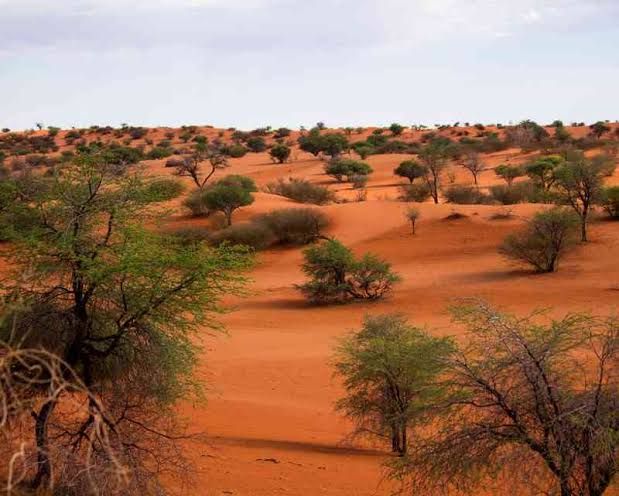 South Africa, Namibia, and Botswana are the three countries that make up the Kalahari Desert, which is a semi-arid savanna with occasional grasses and sandy soils. The Kalahari Desert spans almost 900,000 square kilometers. It receives an average of 250 millimeters of precipitation per year, and it is home to a wide range of animals, such as lions and meerkats, in addition to the San people, who have lived in this region for thousands of years. Within the year 2025, tourist and conservation projects highlight the biological value of the Kalahari Desert, despite the fact that water scarcity continues to be a problem.
South Africa, Namibia, and Botswana are the three countries that make up the Kalahari Desert, which is a semi-arid savanna with occasional grasses and sandy soils. The Kalahari Desert spans almost 900,000 square kilometers. It receives an average of 250 millimeters of precipitation per year, and it is home to a wide range of animals, such as lions and meerkats, in addition to the San people, who have lived in this region for thousands of years. Within the year 2025, tourist and conservation projects highlight the biological value of the Kalahari Desert, despite the fact that water scarcity continues to be a problem.
8. Patagonian Desert (620,000 km²)
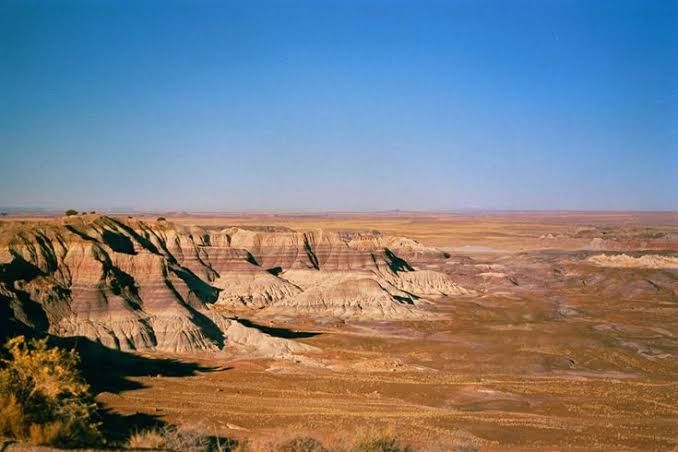
Patagonian Desert is a cold desert that is generated by the rain shadow of the Andes Mountains. It is located in Argentina and Chile and covers a total area of 620,000 square kilometers. A yearly rainfall of less than 200 millimeters is received by its steppe-like environment, which is characterized by the presence of guanacos and bushes. Furthermore, the region’s delicate ecosystem is in jeopardy as a result of overgrazing and climate change, despite the fact that the region’s wind energy potential is becoming more generally acknowledged in the year 2025.
9. Syrian Desert (500,000 km²)

It is a stony, arid region that covers 500,000 square kilometers and is shared by Saudi Arabia, Jordan, Iraq, and Syria. The annual precipitation in the Syrian Desert is less than 125 millimeters. These countries all share the Syrian Desert. Nomadic herders and archaeological monuments such as Palmyra made their homes on the steppes of this region. In the year 2025, water shortages are made worse by ongoing regional warfare and climate change, all of which have an impact on local populations and endeavors to preserve ancient sites.
10. Great Basin Desert (492,000 km²)
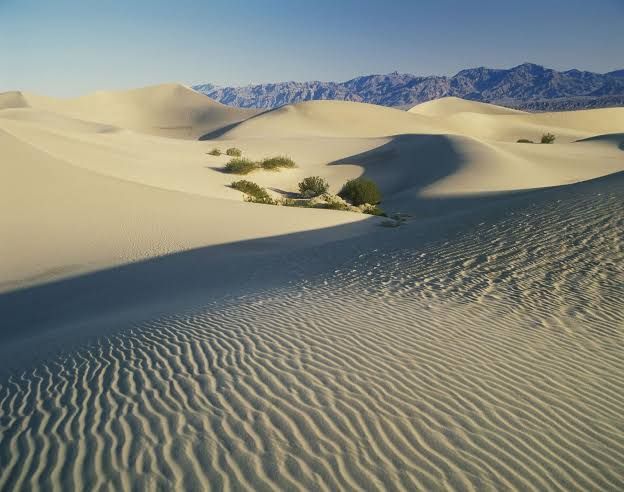
The 492,000-square-kilometer Great Basin Desert is in the western United States. It is a cold desert with mountain ranges and sagebrush areas. There are rare species living there, like bristlecone pine, and it rains between 150 and 300 mm a year. In 2025, problems with water management and development in places like Nevada make it less safe, but people who like to look at the stars are drawn to its dark skies.
